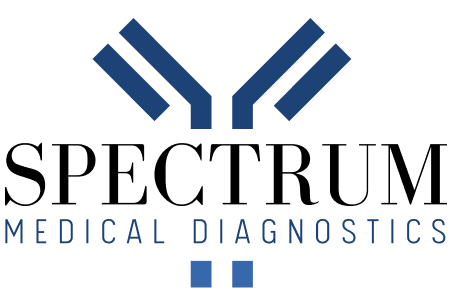- The opioid crisis in Canada is second only to the United States. In 2017 it is believed that over 4,000 Canadians died from opioid-related deaths with overdoses driven by pharmaceutical and illicit opioids. This is a 40 percent increase from deaths in 2016, making it clear that action must be taken to help diminish the risks associated with opioid use. Risk mitigation in Canada includes actions from the federal and provincial governments with several steps in place to help avoid further deaths.
The Source of Addiction
The release of OxyContin in 1996 by drug company Purdue quickly saw the medication become the company’s best-selling drug. The company’s aggressive marketing doctors into believing it was a safe and effective painkiller. Up until the introduction of OxyContin, opioids were primarily used for terminal cancer patients. However, with the approval by Health Canada for the use of OxyContin as a pain reliever for moderate to severe pain, it was marketed as more effective and less addictive than other drugs on the market.
Although prescription opioids helped with pain management, they ultimately led to dependency; Canadians became the second highest users of prescribed opioids in the world. With this came an increase in opioid-related hospital visits and deaths. Doctors consider many factors when choosing treatments including marketing by pharmaceutical stop-ed-info. It is believed this marketing contributed to the over-prescribing of opioids in Canada.
After a decade, reports of addiction and overdose increased both for those with prescriptions and those who purchased the drugs illicitly. In 2012 it was pulled from the market by Purdue. It was at this time that illicit fentanyl hit the streets.

Public Health Approach
As the crisis became apparent, the Government of Canada initiated actions reconfirming the commitment to a “whole-of-government” approach to substance use and abuse. They replaced the National Anti-Drug Strategy with the Canadian Drugs and Substances Strategy in December 2016. This change moved from a focus on law enforcement to a public health focus using a more compassionate approach to assist those with addiction issues. It also uses collaboration between sectors to address the specific needs of each community.
This addresses social factors in order to meet health and social service needs in hand with attempts to reduce the supply of illicit drugs. The efforts address the opioid crisis across numerous federal departments and agencies.
In an effort to curtail the possibility of overdose, Health Canada also made naloxone available without prescription in March 2016. This provides the medication required to help reverse the effects of an opioid overdose. They hoped it would help prevent death by opioid related overdoses. This action made naloxone kits available for those who feel they might be at risk, as well as health providers and first responders. Schools and bars in high-risk areas also have access to these kits.
Government Actions
Since 2016, numerous departments have taken action to help end the opioid crisis according to the government’s website. Actions have included:
- A change in approach to problematic substance use generally, to provide a greater focus on public health
- Greater coordination among partners, to ensure we have not left gaps and that our initiatives are working together
- Changes in legislation and regulations, to address barriers to services or treatment options and gaps in our enforcement authorities
- Enhanced or targeted compliance and enforcement measures, to address illegal activities with drugs
- New or refocused programming and increased funding to provide needed services; and,
- Collaborative efforts to build a more robust evidence base, to inform actions and identify new trends.
Warning Labels
The most recent action taken is the requirement that all prescription opioids dispensed at Canadian pharmacies or doctors’ offices will require a warning label in hand with information about the risks of using opioids. Chief Medical Advisor for Health Canada, Supriya Sharma, understands that while this is not going to resolve the issue, but is an important step towards educating the general public. This will help educate those who are unaware of the dangers of the drug to understand the risks so they can make an informed decision on whether they wish to take the medication or not. The information provided will address “the significant risk that could be associated… speaking specifically around dependence and potential for addiction and overdose,” according to Sharma.
The stickers will be bright yellow triangles with an exclamation point and a warning that opioids can cause dependency, addiction and overdose. The handouts will detail information regarding the warnings as well as signs of withdrawal, overdose and side effects. In hand with the labels, pharmaceutical companies will be required to develop and implement mandatory risk-management plans such as registries or compulsory training sessions designed to assist in the collection of data to demonstrate adverse reactions to the drugs.
Voluntary Cease of Marketing
In direct response to the belief that marketing incited the crisis, the Government of Canada has also taken action to reduce the risk that industry marketing will continue to influence healthcare professionals. In June 2018 they called on opioid manufacturers and distributors to voluntarily stop the advertising and marketing of opioids. The Minister of Health, Ginette Petitpas sent a letter to Canadian manufacturers and distributors, asking them to respond to the crisis by ceasing all advertising efforts directed at healthcare professionals.
Purdue Pharma, the drug company blamed for the crisis, announced they would suspend all marketing and advertising for opioids in response to the federal government’s request. They had already stopped promotions in the United States for more than four months at the time they announced their decision. In a letter dated June 27, 2018 to Health Minister Ginette Petitpas, Chief Executive Officer of Purdue’s Canadian operation, David Pidduck, said Purdu ceased “all promotional and advertising activities relating to our prescription opioids” as of June 20. However, he also stated that the company “remain(s) steadfast in our belief that Canadian prescribers require the most recent information … to ensure that patients are treated appropriately.”
If you or a loved one are dependent on opioids addiction rehabilitation centres are available.
For more information about testing kits for opioids, please contact the experts at Spectrum MDX here.

